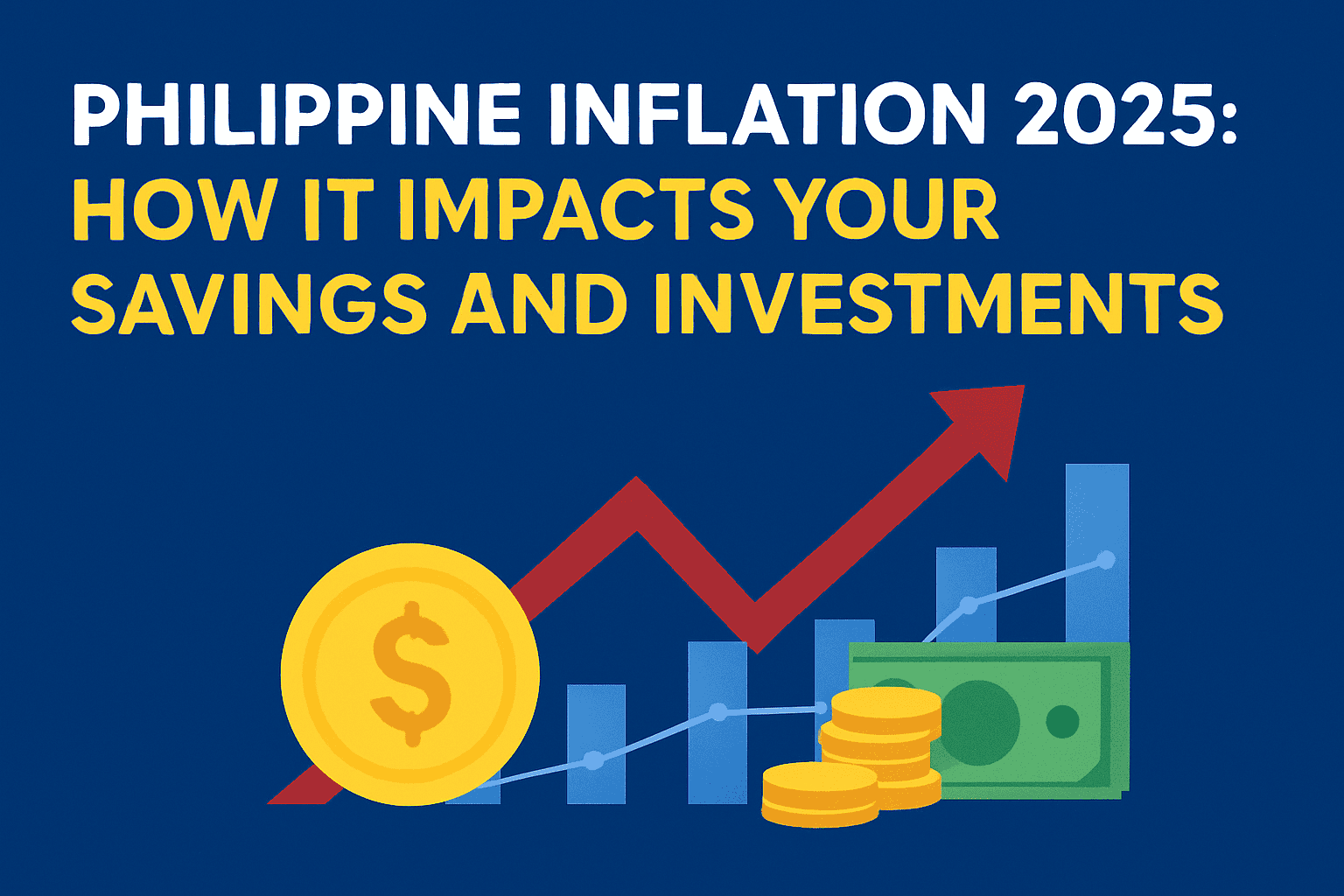Inflation in the Philippines has always been a hot topic, and in 2025, it’s once again front and center. For ordinary Filipinos, inflation simply means that your peso today buys you less tomorrow. Whether you’re saving money in the bank, investing in Pag-IBIG MP2, or trying to grow your portfolio in stocks or bonds, inflation has a big impact on your financial goals.
In this article, we’ll break down how inflation in 2025 affects your money and what you can do to protect your hard-earned savings.
What is Inflation in Simple Terms?
Inflation is the general increase in prices of goods and services over time. When inflation is high, the cost of basic needs like food, transportation, and utilities also goes up.
For example:
- If inflation is 6% and you keep ₱100,000 in a regular savings account earning 0.10% per year, your money actually loses value. After a year, it can only buy what ₱94,000 could have bought the year before.
This is why inflation matters — it silently eats away at your money if you’re not proactive.
Philippine Inflation in 2025
The Philippine Statistics Authority (PSA) reports monthly inflation, and as of 2025, rates are still higher than the Bangko Sentral ng Pilipinas (BSP) target of 2–4%. Rising food prices, oil costs, and global economic pressures continue to put pressure on Filipino households.
What this means for you:
- Groceries and transport are taking up a larger part of your budget.
- Your bank savings interest rate is nowhere near enough to beat inflation.
- Investments that used to look “safe” may now give you negative real returns.
How Inflation Affects Your Savings
1. Bank Deposits
Most savings accounts in the Philippines earn only 0.10% to 0.25% per year. With inflation at around 5–6%, this means your money’s real value is shrinking.
2. Time Deposits
Even time deposits that earn around 3–4% still lag behind inflation. They’re safer than savings accounts, but not enough to fully protect your money’s purchasing power.
3. Emergency Funds
Despite the low returns, it’s still important to keep 3–6 months’ worth of expenses in savings accounts or digital banks. Think of it as protection, not investment.
How Inflation Affects Your Investments
1. Pag-IBIG MP2
Pag-IBIG MP2 has historically given 6–8% annual dividends. With inflation at 5–6%, it still manages to keep you ahead — but the margin is thinner compared to past years.
2. Bonds and RTBs
Government bonds typically yield 5–6% in 2025, which means they’re only slightly ahead (or sometimes equal) to inflation. Good for stability, but don’t expect massive growth.
3. Stocks and Equity Funds
Stocks are volatile, but they have the potential to beat inflation over the long run. In 2025, Philippine stock market returns are mixed, but global equity funds (such as those available through GCash or banks) may provide better opportunities.
4. Real Estate
Property prices often rise with inflation. If you own property or are planning to invest, real estate can act as a hedge. But liquidity (how fast you can sell) is always a concern.
Strategies to Protect Yourself from Inflation
- Don’t rely on savings accounts for growth – use them only for emergency funds.
- Diversify your investments – mix MP2, RTBs, and equity funds to balance risk and growth.
- Consider global investments – feeder funds and ETFs give you exposure to international markets, which may perform better than local ones.
- Invest in skills and side hustles – increasing your earning power is one of the best defenses against inflation.
Blogger’s Corner
Inflation is something we can’t control — but how we respond to it is entirely in our hands. If you simply leave your money sleeping in a regular savings account, you’re guaranteed to lose purchasing power. But if you’re willing to learn, diversify, and take calculated risks, you can stay ahead of rising prices.
Remember: the best way to fight inflation is to make your money grow faster than the rate of price increases.
